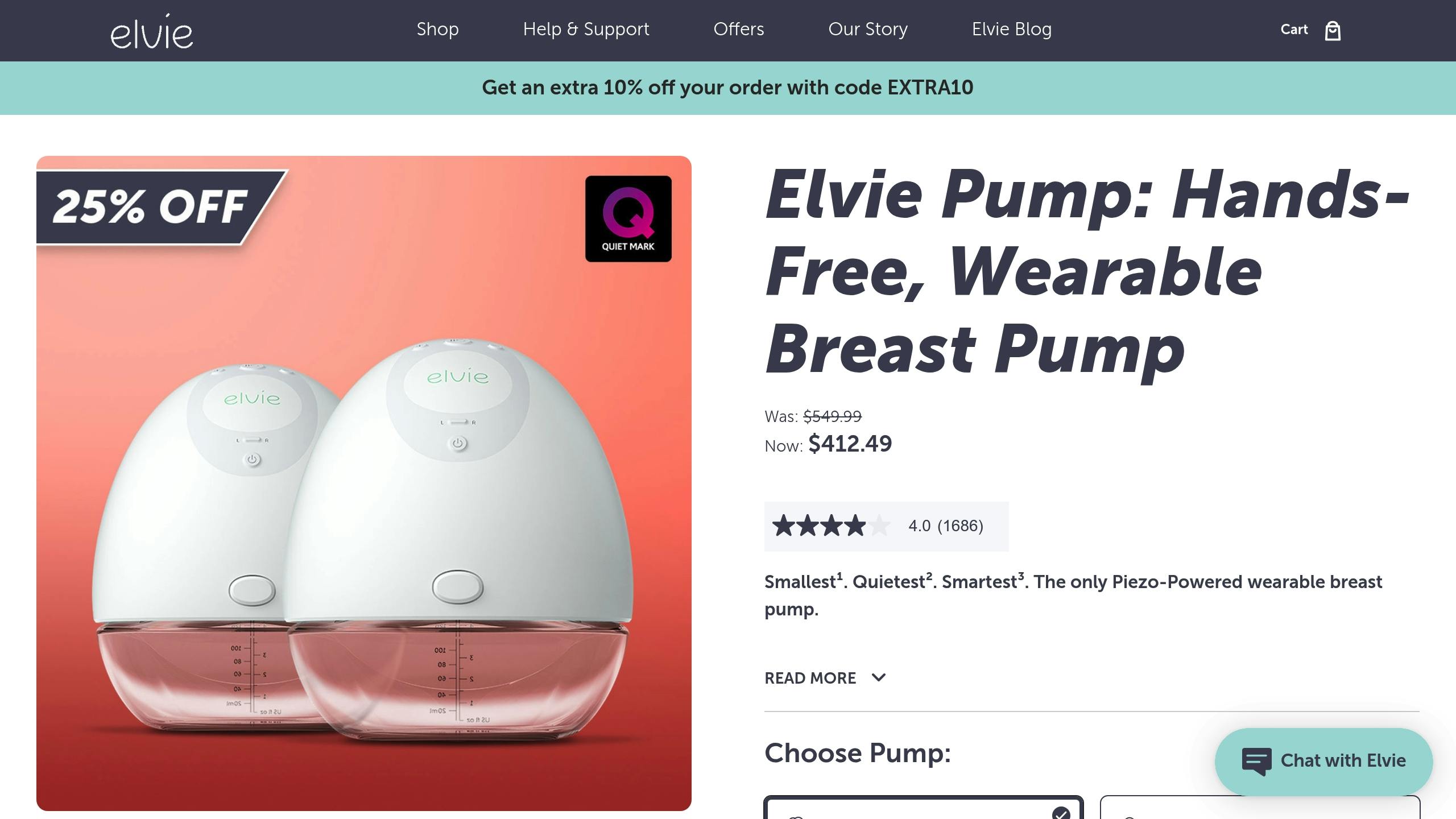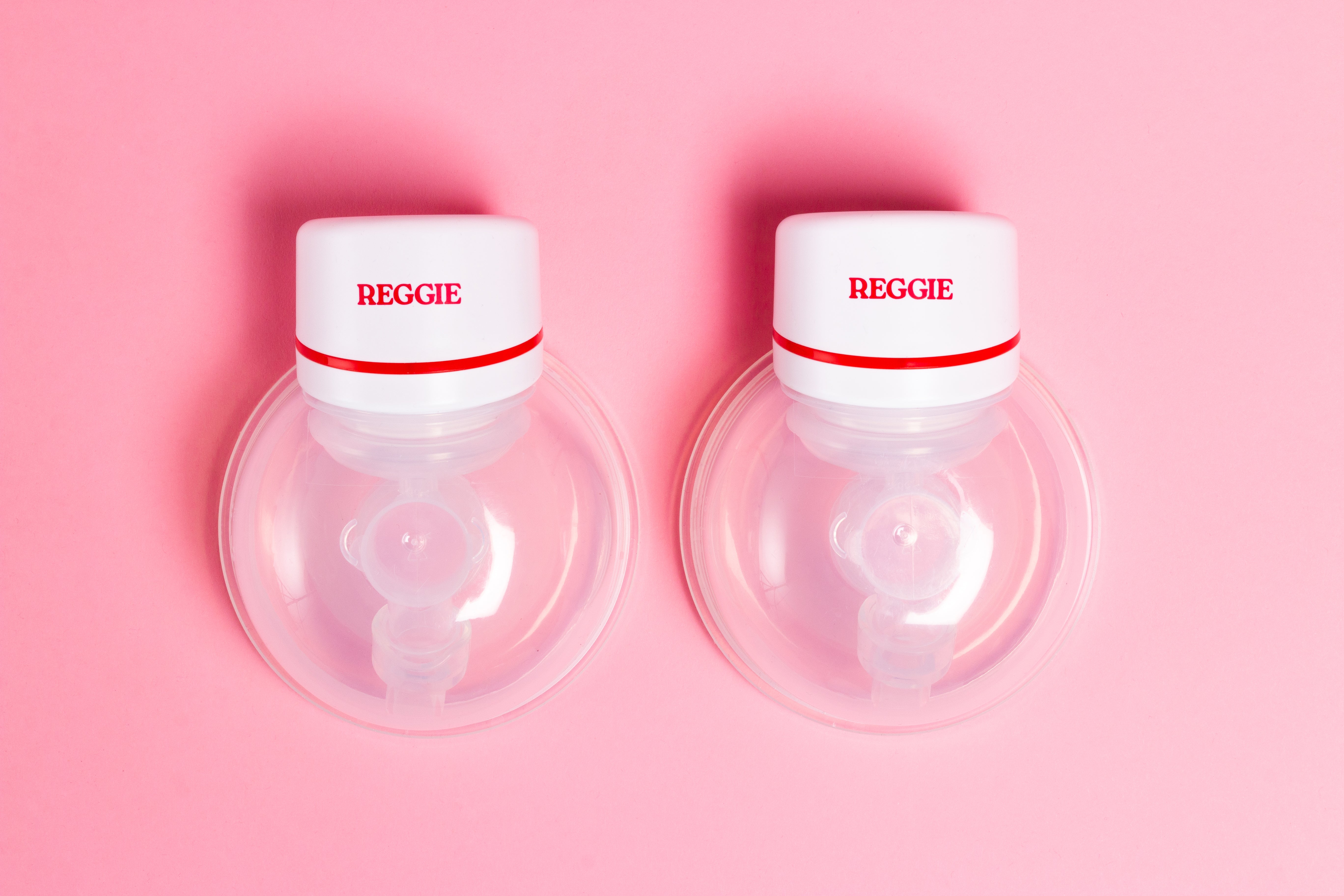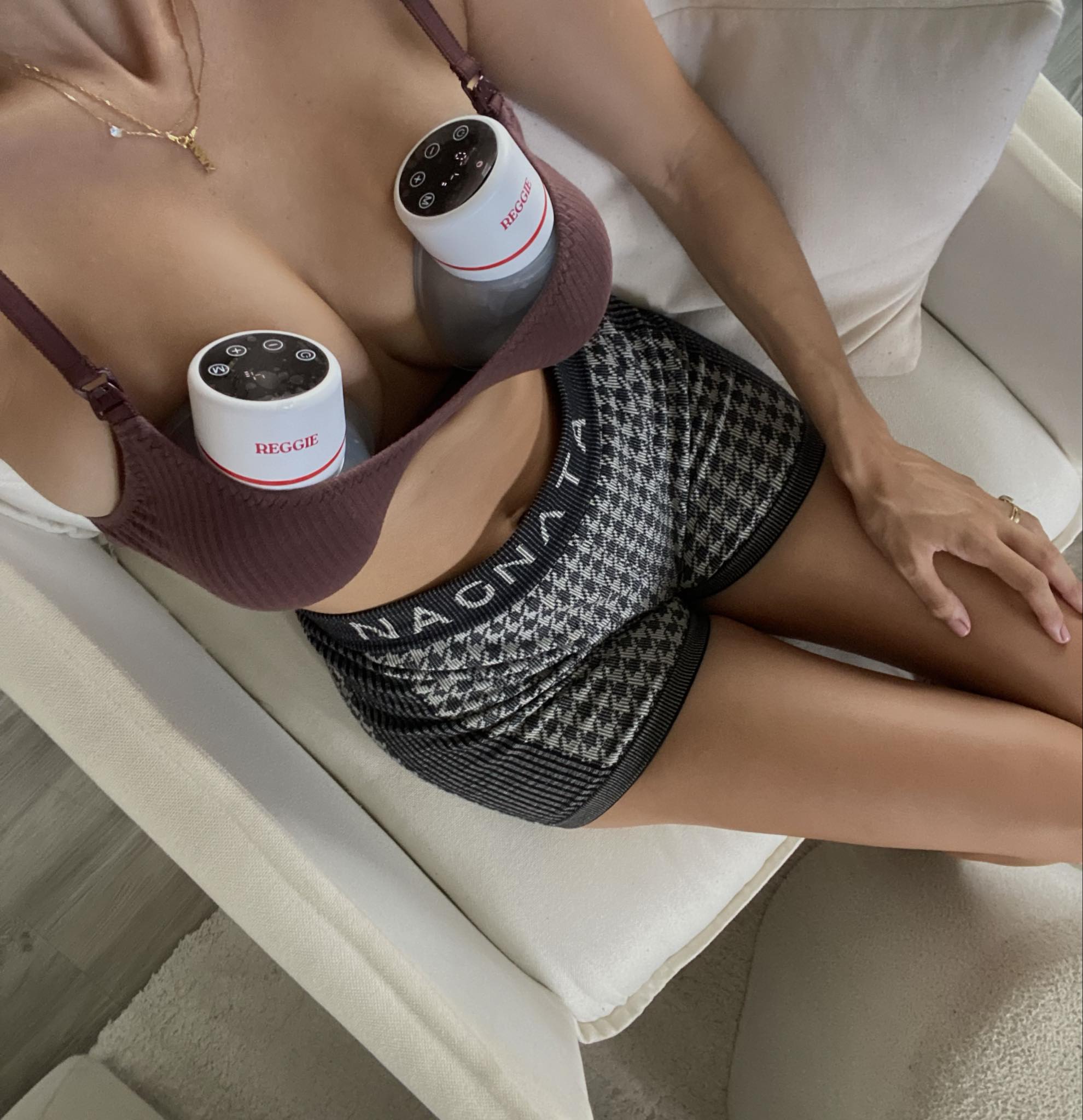5 Common Breast Pumping Problems and Solutions
Breast pumping can be tricky, but most issues have easy fixes. Here’s a quick rundown of the five most common problems and how to solve them:
- Low Milk Output: Wearable pumps often extract less milk than traditional pumps. Fix it with proper flange sizing, power pumping, and warm compresses.
- Nipple Pain: Often caused by incorrect flange size or suction settings. Measure your nipples post-pumping and start with low suction.
- Milk Leaks: Ensure a good seal by centring your nipple, checking pump parts regularly, and replacing worn components.
- Cleaning Hassles: Rinse immediately, wash with hot soapy water, or use steam bags for quick sanitisation.
- Power Issues: Extend battery life by using original chargers, turning off Bluetooth, and carrying a backup power bank.
These simple adjustments can make pumping more comfortable and efficient. Let’s dive into the details!
1. Getting Less Milk When Pumping
Many Australian mums notice that wearable breast pumps often extract less milk than traditional electric pumps. Studies indicate wearable pumps remove about 11% less milk on average, extracting only 74% of available milk compared to 85% with standard pumps. This difference is mainly due to design and fit issues. Knowing why this happens and how to address it can help maintain your milk supply.
Why Milk Output May Be Low
Wearable pumps, while convenient, can sometimes be less effective at milk extraction. Dr. Danielle Prime's 2021 research highlighted that improper flange sizing is a common reason for reduced efficiency. This critical detail is often overlooked.
"The combination of hand expression with pump use can increase milk output by up to 48% compared to pumping alone", according to the Journal of Human Lactation.
By making specific adjustments, these challenges can often be resolved.
Steps to Increase Milk Supply
Get the Right Fit
Measure your nipple diameter and choose a flange that's 2-3mm larger. Pumps like the Reggie Baby offer various flange sizes, making it easier to get a proper fit for effective milk extraction.
Try Power Pumping
Power pumping involves mimicking a baby’s cluster feeding to stimulate supply. Use this routine daily:
- Pump for 20 minutes
- Rest for 10 minutes
- Pump for 10 minutes
- Rest for 10 minutes
- Pump for another 10 minutes
Use Warm Compresses
Applying warmth before pumping can improve milk flow. Warm compresses, like microwaveable wraps, or even a warm shower before pumping, can increase output by 15-30%.
Adjust Timing and Technique
Start each session with 1-2 minutes in stimulation mode before switching to expression mode. Gradually increase suction to a comfortable level. Research shows that using proper technique can make pumping much more effective.
Don’t forget to stay hydrated and eat a balanced diet. These simple lifestyle factors can boost milk production by 10-20%.
2. Managing Nipple Pain
Comfort is just as important as optimising milk output when using wearable breast pumps. Nipple pain is a common issue faced by many breastfeeding mothers and can significantly impact the pumping experience .
Finding the Right Flange Size
As mentioned earlier, choosing the correct flange size is key to avoiding many problems, including nipple pain. For this specific issue, measure your nipples after pumping when they are erect. This ensures the flange size aligns with your anatomy and helps prevent discomfort.
A proper fit not only improves milk flow but also reduces chafing, which is responsible for most cases of nipple pain (around 70%) . If needed, brands like Reggie Baby offer additional flange sizes for $12 AUD, which can be a helpful option beyond the standard 24mm size.
| Flange Fit Indicators | Signs to Watch For |
|---|---|
| Too Small | Nipple rubs against tunnel sides, redness, white ring around the base |
| Too Large | Too much areola drawn in, poor suction, movement in the tunnel |
| Just Right | Comfortable movement, no redness, minimal areola pulled in |
Pain Relief Methods
Quick Relief Tips:
- Apply lanolin cream or a small amount of breast milk as a lubricant for the flange.
- Use hydrogel pads between pumping sessions for soothing relief.
- Start with a low suction setting and gradually increase it.
- Add a few drops of breast milk to lubricate the flange before pumping.
Prevention Tips:
- Slowly increase suction settings to avoid sudden discomfort.
- Ensure flanges are aligned correctly before starting a session.
- Clean all pump parts thoroughly after each use to prevent irritation from bacteria.
If nipple pain persists for more than a week or you notice damage like cracks or bleeding, it's important to consult a lactation consultant. Addressing the issue early can help avoid further complications and ensure a smoother pumping journey .
3. Stopping Milk Leaks
A well-fitted flange doesn't just prevent nipple pain (see Section 2); it also helps stop milk from leaking. For many Australian mothers using wearable breast pumps, milk leakage is a common issue - affecting up to 68% of users . This can be especially frustrating when pumping at work or while out and about.
How to Get a Better Seal
To avoid leaks, focus on creating a strong seal. Start by centring your nipple in the flange tunnel before you begin pumping . For an added grip, try dampening the flange edges with a little breast milk or water.
Regular Checks for Pump Parts
The condition of your pump parts plays a big role in maintaining a proper seal. Make it a habit to inspect your pump components regularly to catch any damage early.
- Daily Checks: Look at the valves and membranes daily for any tears, residue, or signs of wear.
-
Replacement Guidelines:
- Valves/Membranes: Replace every 1–3 months.
- Tubing: Replace every 3–6 months.
- Flanges: Replace every 6 months or sooner if cracked .
Keeping your pump in good condition works hand-in-hand with thorough cleaning (see Section 4). Silicone breast shields are another great option for active mums - they provide extra security during movement while still keeping your pump effective .
"Regular maintenance is crucial for preventing leaks. Think of your breast pump parts like essential parenting gear - they need regular checks and timely replacement to perform at their best", says a Momcozy product specialist .
If leaks persist, it’s often a sign that parts like valves or flanges need replacing. Stick to the replacement schedule above to keep your pump working smoothly.
sbb-itb-08733ff
4. Easy Cleaning Tips
Keeping your pump clean is key to avoiding leaks and ensuring milk collection stays hygienic. A well-maintained pump not only protects your baby but also keeps performance consistent. These tips are designed to fit into even the busiest schedules.
Quick Cleaning Methods
-
Immediate Rinse
Rinse pump parts with cool water right after use to stop residue from sticking. -
Thorough Wash
Wash with hot, soapy water using a brush specifically for pump parts. Products like Dapple Baby Bottle & Dish Soap are great for removing milk residue. Avoid using your regular dish brush to prevent contamination.
| Cleaning Method | Time Required |
|---|---|
| Hand Washing | 5-10 minutes |
| Microwave Steam Bag | 2-3 minutes |
| Dishwasher (Top Rack) | 1-2 hours |
If you're a working mum, store clean pump parts in a fridge-safe container between uses. This method is safe for up to 24 hours and saves you from washing parts multiple times during the day.
When to Replace Parts
Regularly inspect pump components to ensure they are in good condition. Here's a quick guide:
| Component | Replacement Frequency | Warning Signs |
|---|---|---|
| Breast Shields | Every 6 months | Cracks or damage |
| Collection Cups | Every 3-6 months | Discolouration |
For fast sanitisation between deep cleans, microwave steam bags like Medela Quick Clean Micro-Steam Bags can sanitise parts in just 2-3 minutes. These are convenient for quick touch-ups when you're short on time.
5. Power and Performance Issues
Battery and performance hiccups can throw off your pumping routine. Like cleaning concerns (see Section 4), power problems often hit hardest for mums pumping at work or while managing childcare. A few simple steps can help keep things running smoothly and support the need for convenient, portable pumping options.
Extending Battery Life
Wearable pumps typically provide around 2-3 hours of use per charge. To make the most of your pump's battery:
| Action | Benefit |
|---|---|
| Use the original charger and clean ports weekly | Keeps charging efficient |
| Carry a backup power bank | Ensures charging on the go |
| Turn off Bluetooth when not in use | Minimises battery drain |
| Opt for lower suction settings | Helps the battery last longer |
Some pumps, like the Reggie Pump, offer fast charging in just 2 hours. Managing your power effectively pairs well with regular cleaning (see Section 4) to keep your pump dependable.
Quick Fix Guide
Performance issues often share the same culprits as leaks - worn parts and incorrect assembly (see Section 3).
- Weak or No Suction: Double-check all connections and assembly. Clean valves thoroughly, as milk residue can block suction.
- Unexpected Shutdowns: Start by confirming the battery level. If the pump shuts down despite being charged, it could be overheating. Let it cool for 15-20 minutes before trying again.
- Inconsistent Performance: Install any updates recommended by the manufacturer to keep your pump running as it should.
These quick fixes and preventive measures can help you avoid unnecessary interruptions during your pumping sessions.
Better Pumping Results
Australian mothers can improve their pumping experience by tackling common challenges with smart solutions. Focusing on these areas makes pumping more efficient and manageable, even with a busy lifestyle.
Modern pumps, like those from Reggie Baby, offer features designed to address these issues:
| Challenge | Pump Feature | How It Helps |
|---|---|---|
| Low Milk Output | 8 suction modes | Allows tailored expression |
| Discomfort | 5 flange sizes | Ensures a better, more comfortable fit |
| Time-Consuming Maintenance | Quick-dry parts | Makes cleaning faster and easier |
The Reggie Baby pump also includes USB-C charging for dependable power and adjustable suction settings to help mothers find what works best for them.
Need more help? You can always reach out to Australia's breastfeeding helpline at 1800 686 268 or contact your pump’s customer service team for guidance.
FAQs
What problems are common with breast pump use?
One frequent issue is blocked ducts, which can cause breast tenderness, fever, nausea, or pain when touched. Using proper techniques can cut these problems by 40% within three months . To help avoid blocked ducts:
- Massage your breasts while pumping.
- Switch up pumping positions to address different milk ducts.
For help with flange fitting, check Section 2. Pumping techniques are explained in Section 1.
Why isn’t my Elvie Pump working?

If your Elvie Pump isn't pumping effectively, it could be due to incorrect nipple placement. For wearable pumps like Reggie Baby models, follow these steps:
| Issue | What to Do |
|---|---|
| Nipple Position | Make sure your nipple is centred in the pump's opening. |
| Compression | Ensure your nipple isn’t touching the sides of the pouch. |
| Assembly | Double-check that all parts are securely connected. |
| Suction | Test the seal before starting. |
If the problem continues:
- Check that the battery is fully charged.
- Refer to Sections 3 and 5 for more tips.
- Reach out to Reggie Baby's 24/7 Australian support team.
For a full troubleshooting guide, see the Quick Fix section in Section 5.






Leave a comment